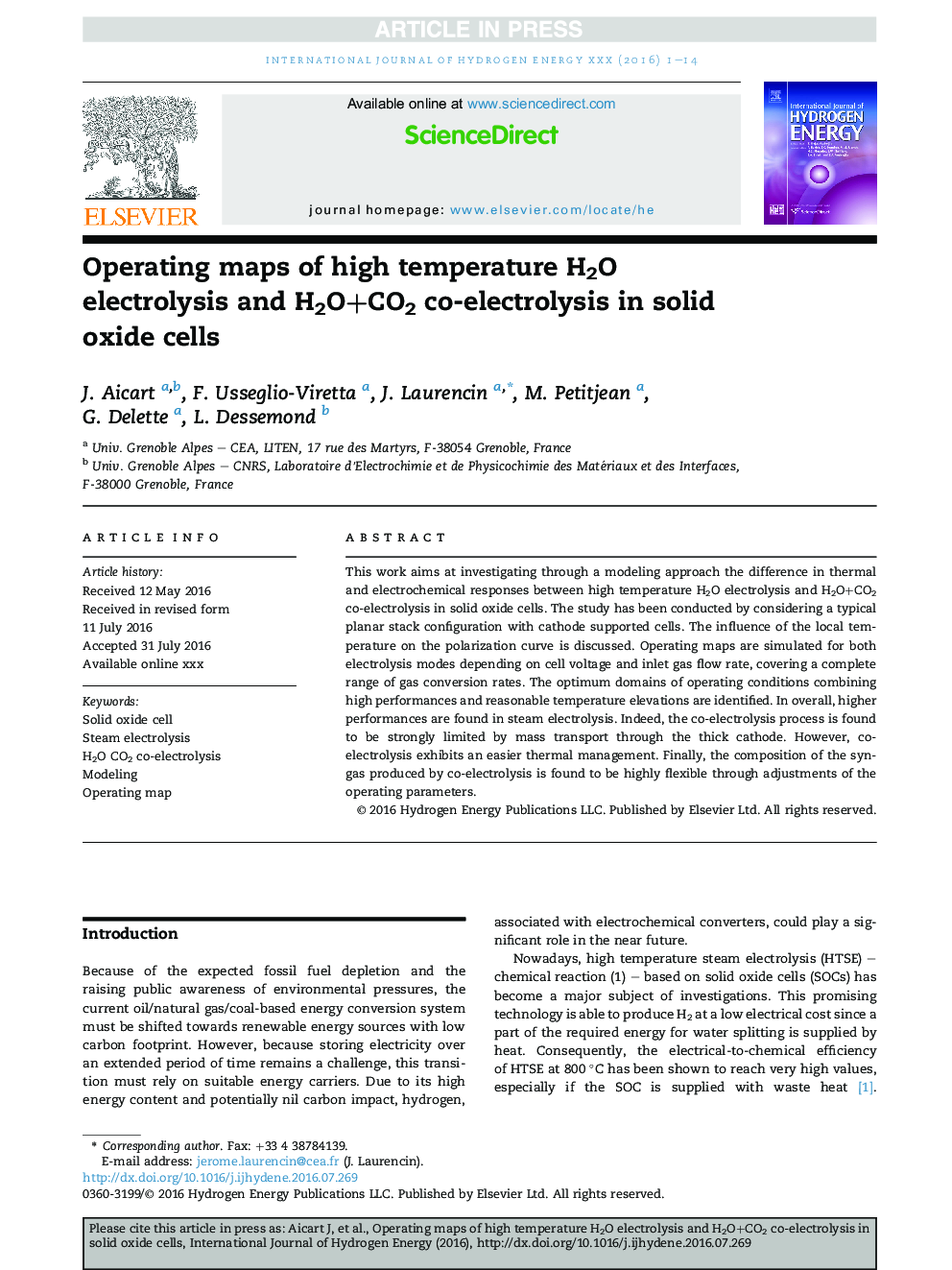| Article ID | Journal | Published Year | Pages | File Type |
|---|---|---|---|---|
| 5148209 | International Journal of Hydrogen Energy | 2016 | 14 Pages |
Abstract
This work aims at investigating through a modeling approach the difference in thermal and electrochemical responses between high temperature H2O electrolysis and H2O+CO2 co-electrolysis in solid oxide cells. The study has been conducted by considering a typical planar stack configuration with cathode supported cells. The influence of the local temperature on the polarization curve is discussed. Operating maps are simulated for both electrolysis modes depending on cell voltage and inlet gas flow rate, covering a complete range of gas conversion rates. The optimum domains of operating conditions combining high performances and reasonable temperature elevations are identified. In overall, higher performances are found in steam electrolysis. Indeed, the co-electrolysis process is found to be strongly limited by mass transport through the thick cathode. However, co-electrolysis exhibits an easier thermal management. Finally, the composition of the syngas produced by co-electrolysis is found to be highly flexible through adjustments of the operating parameters.
Related Topics
Physical Sciences and Engineering
Chemistry
Electrochemistry
Authors
J. Aicart, F. Usseglio-Viretta, J. Laurencin, M. Petitjean, G. Delette, L. Dessemond,
